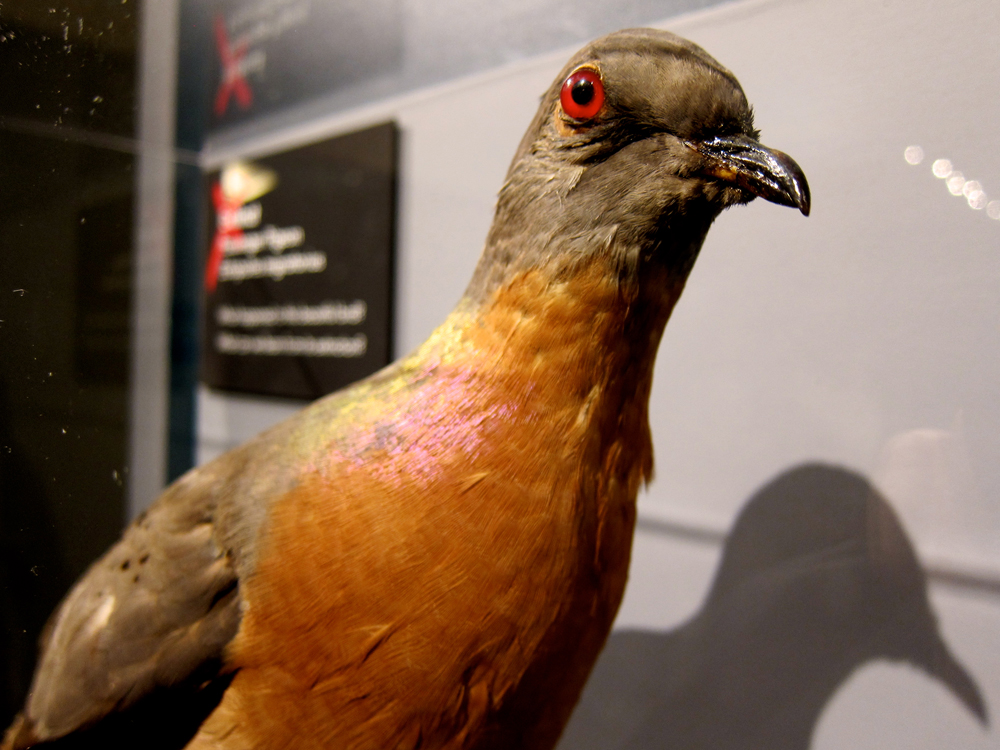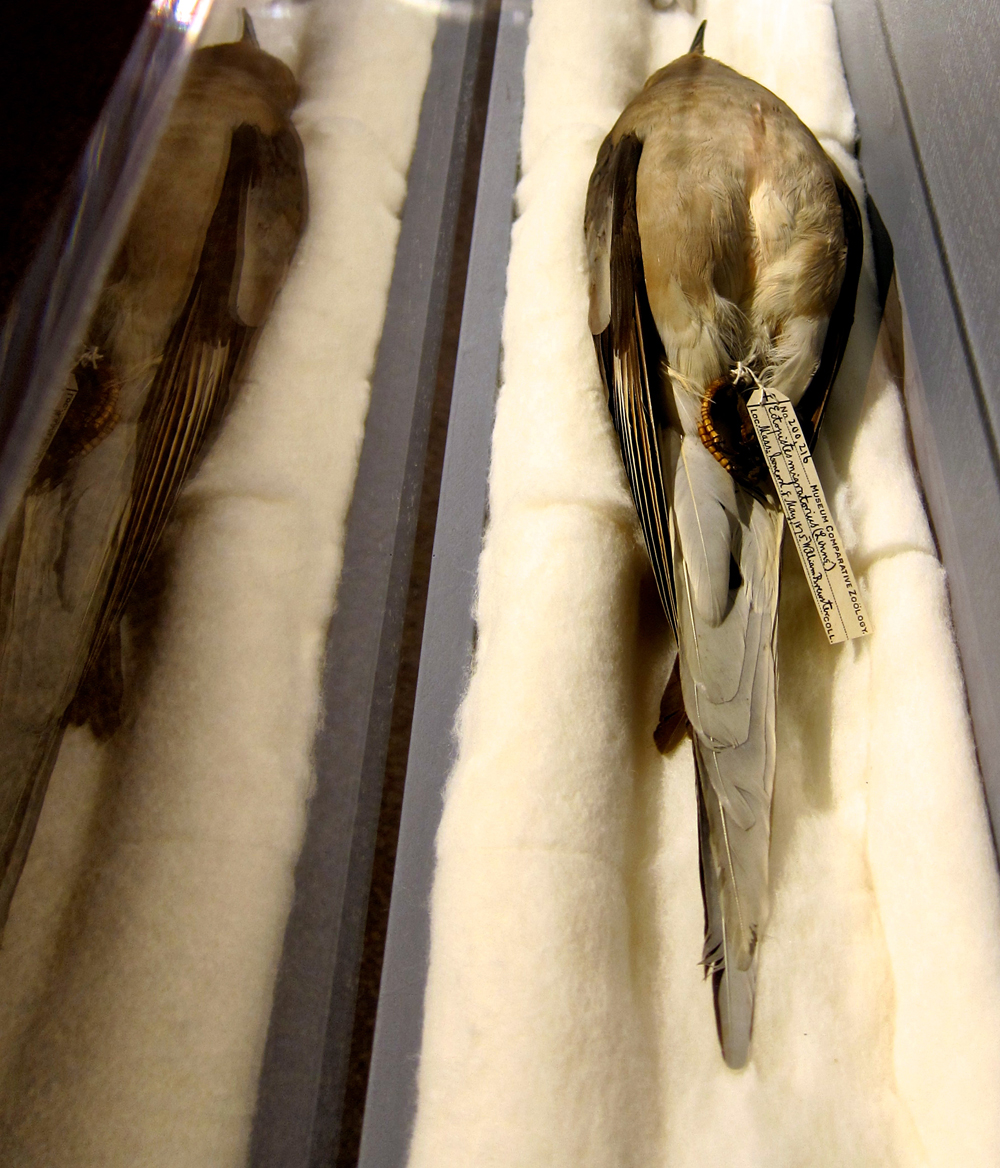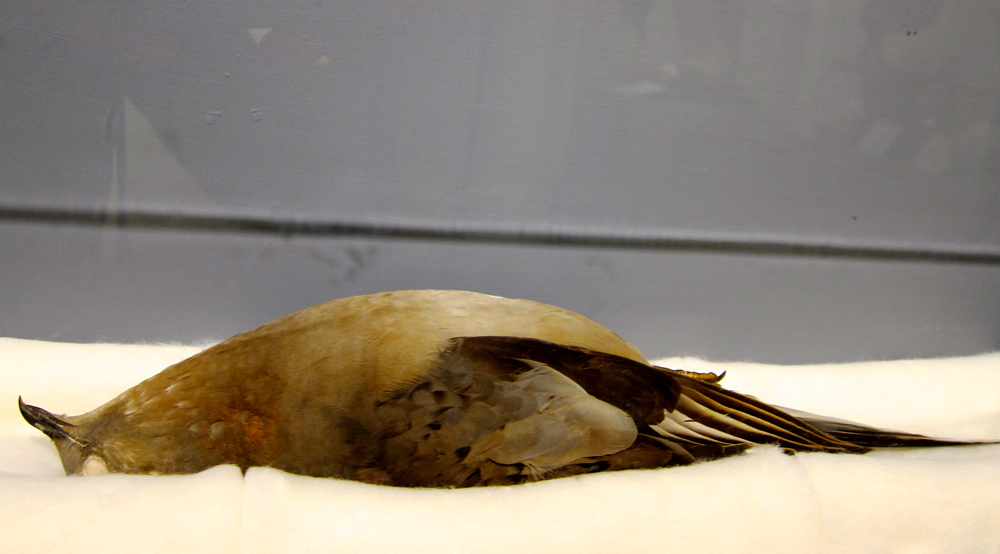Images of Rare Passenger Pigeon Museum Specimens
100th anniversary of extinction

The passenger pigeon once clouded North American skies, with flocks of millions traveling across the continent. They went extinct in 1914 due to over hunting. The Harvard Museum of Natural History recently opened an exhibit commemorating the 100th anniversary of the bird's extinction, in hopes of reminding the public of this cautionary tale.
A lost species

The passenger pigeon resembles the feral rock pigeon that is common in cities around the world today, but had longer tail feathers.
Male specimen

Male passenger pigeons had red bellies.
Female specimen

Female passenger pigeons had beige bellies.
Lasting legacy

The Harvard Museum of Natural History hopes their exhibit will remind visitors of the passenger pigeon's story and the lasting impact it has had on the modern conservation movement. The bird's demise helped inspire the Migratory Bird Treaty Act of 1918 that protected migratory birds from hunting without permit, and also lead the way for later legislation such as the Endangered Species Act of 1973.
Get the world’s most fascinating discoveries delivered straight to your inbox.

